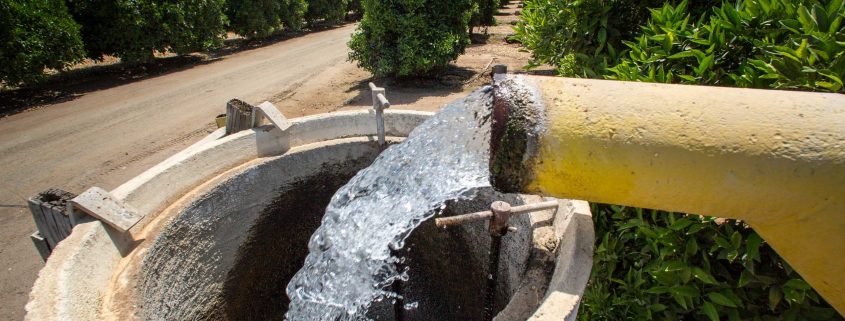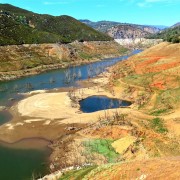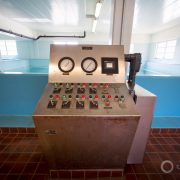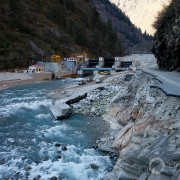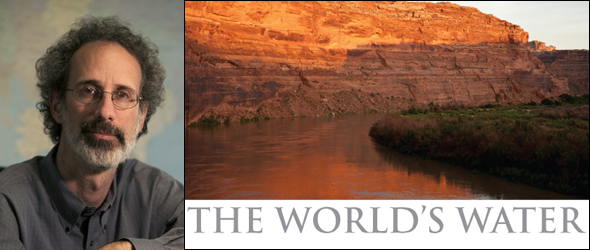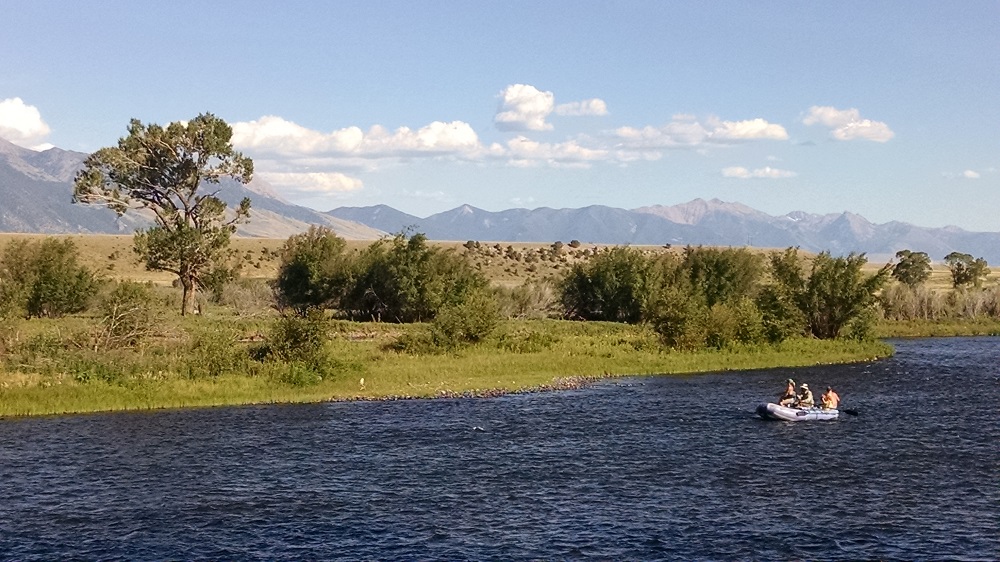Sinking Land Crushes California Groundwater Storage Capacity
Overpumping diminishes ability to store water underground.
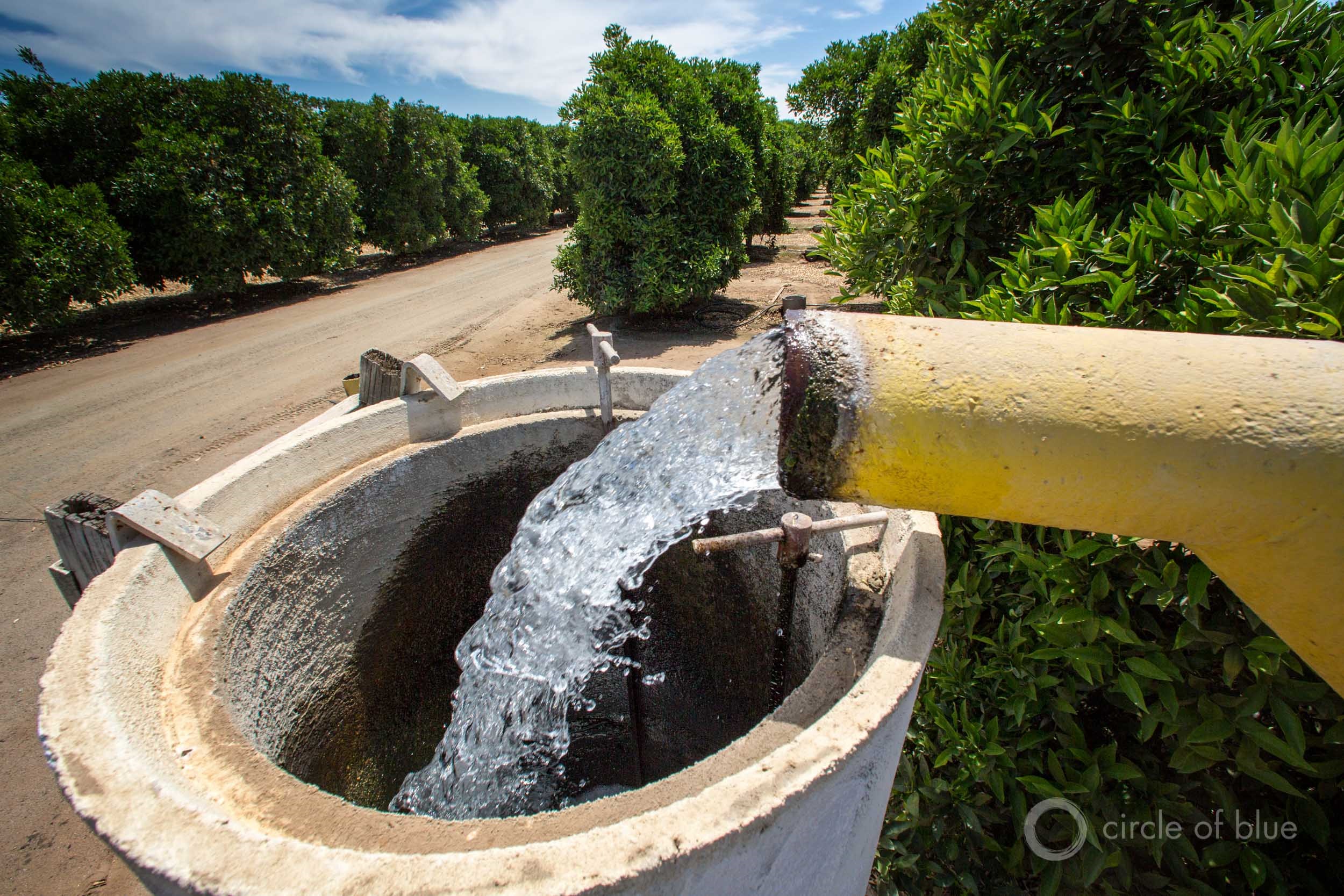
When reservoirs and rivers are low, farmers in California’s San Joaquin Valley pump groundwater. When aquifer levels drop to record lows, it decreases natural water-storage capacity. Photo © J. Carl Ganter / Circle of Blue
By Brett Walton, Circle of Blue
Unbridled pumping of aquifers in California’s San Joaquin Valley is severely reducing the land’s capacity to hold water, according to a Stanford University study. The loss of storage is due to subsidence, which is the compaction of soils as a result of removing too much water.
The study, which provides the first estimate of the permanent loss of groundwater storage space that occurred during a drought from 2007 to 2010, also shows that California lost natural water storage capacity equal to a medium-sized reservoir. The losses occurred just as the state prepares to spend billions of dollars to build reservoirs to retain water, either above ground or below.
The study, accepted on February 23 for publication in the journal Water Resources Research, also comes as a series of winter storms have filled reservoirs to the point that managers are frantically dumping water to make room for more rain and spring snowmelt. So much water poured into Lake Oroville in northern California that it damaged the reservoir’s two spillways. All of the state’s big reservoirs are above their historical averages and several are lapping at the brim.
California officials will soon decide how to spend taxpayer money on projects to retain some of those big flows. The application window for $US 2.7 billion in state bond funding for storage projects will open in mid-March. Voters approved the bond measure in 2014. Both surface reservoirs and groundwater storage are eligible to apply. There is significant pressure to build Sites Reservoir, which would inundate a magnificent grassy basin in Colusa County, northwest of Sacramento.
The Stanford study focuses on the San Joaquin Valley, where groundwater plays an outsized role in the economy, culture, and politics. With seemingly endless rows of almond trees, orchards, and vineyards, the valley is a cornerstone of California’s $US 47 billion farm industry. It is home to thousands of families whose wells went dry during the recent five-year drought. And the valley is where large sections of land have sunk several feet in the last two years because of soil compaction linked to groundwater pumping. Water officials indicated earlier this month that this land subsidence is causing sections of water canals to buckle and reducing the effectiveness of the California’s extensive water transport network.
Think of the San Joaquin Valley aquifer as a sponge made of layers of sand, gravel, and clay. Other studies of the valley’s groundwater have looked at subsidence, which corresponds to a fall in land elevation. The Stanford study considers the sponge’s ability to refill with water. In effect, soil compaction, particularly of the clay layers, shrinks the sponge. It cannot hold as much water as it used to.
The researchers used two calculations to estimate the shrinkage between 2007 and 2010. In the lower estimate, the San Joaquin Valley lost some 335,000 acre-feet of storage capacity, comparable to the amount of water held in the Hetch Hetchy Reservoir, which provides the bulk of San Francisco’s drinking water. In the upper estimate, storage declined by 606,000 acre-feet, equal to California’s fifteenth-largest reservoir. An acre-foot is 326,000 gallons.
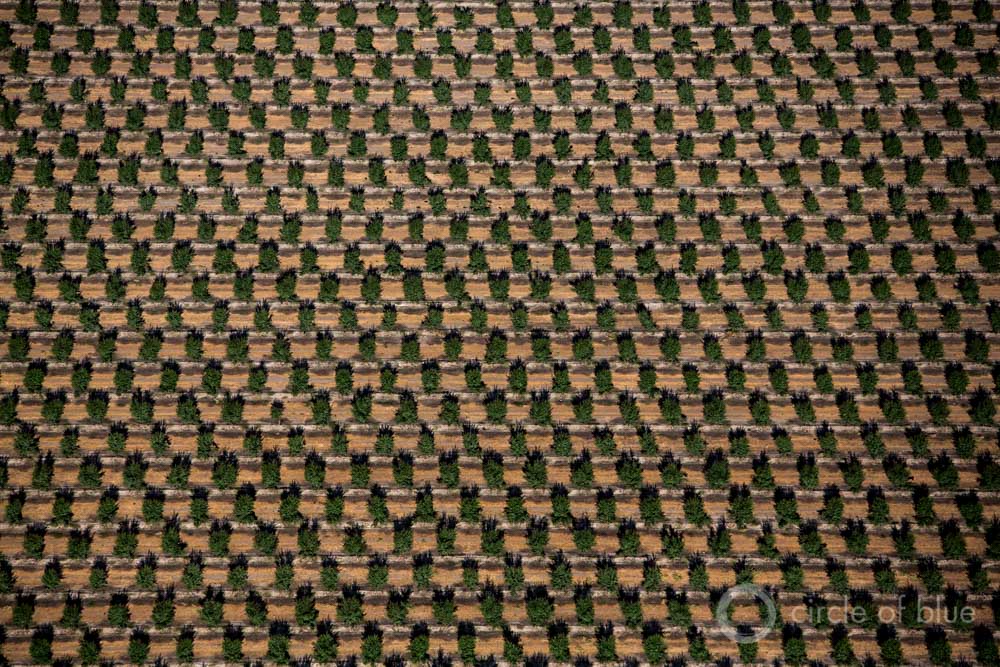
The mesmerizing geometry of the San Joaquin Valley’s farm economy. Photo © J. Carl Ganter / Circle of Blue
Ryan Smith, a study co-author, said the lower estimate was calculated using the most conservative assumptions about soils. He called the higher estimate more reasonable because it more accurately reflects the region’s geology.
For Smith, the storage loss was not surprising but the short timeframe in which it occurred is a warning signal. “This permanent loss is a large number but a small fraction of total aquifer storage,” Smith, a Ph.D. candidate at Stanford’s School of Earth, Energy and Environmental Sciences studying land subsidence, told Circle of Blue. “However, this loss happened over a three-year period and we just had another more severe drought since 2012. If this continues to happen we’re going to see more and more decrease in storage capacity.”
Smith said that it is likely that the loss of storage has continued through the recent drought, given that groundwater levels reached historic lows and subsidence rates accelerated. A more thorough analysis will come later.
Bill Alley, director of science and technology at the National Groundwater Association, said the study results seem reasonable. The authors, which include scientists at NASA’s Jet Propulsion Laboratory, are well-respected, he said, and they used a common technique for estimating storage loss.
California, however, is not destined for a perpetual decline in groundwater storage, according to Smith. Permanent reductions in the aquifer’s sponginess occur when water levels surpass historic lows, as they have in the last few years. “If we can keep the water levels above the levels that we just hit in 2015, then we can prevent a permanent loss of groundwater storage in the future,” Smith explained.
Not only does compaction of aquifers decrease storage capacity. It also realigns the sediment grains in the clay layers, Smith said. The realignment makes it harder to draw water out of the aquifer as well as more difficult to inject water back in. This is a potential problem for agencies looking to aquifers as a place to stash flood water.
For years, groundwater users in the San Joaquin Valley, primarily farms with limited surface water supplies, have pumped more water than is available. A state law that was signed in 2014 seeks to halt land subsidence and return overdrafted groundwater basins to sustainable use. The timetable for compliance, however, runs to 2040, a schedule that some lawmakers would like to hasten.
Brett writes about agriculture, energy, infrastructure, and the politics and economics of water in the United States. He also writes the Federal Water Tap, Circle of Blue’s weekly digest of U.S. government water news. He is the winner of two Society of Environmental Journalists reporting awards, one of the top honors in American environmental journalism: first place for explanatory reporting for a series on septic system pollution in the United States(2016) and third place for beat reporting in a small market (2014). He received the Sierra Club’s Distinguished Service Award in 2018. Brett lives in Seattle, where he hikes the mountains and bakes pies. Contact Brett Walton

